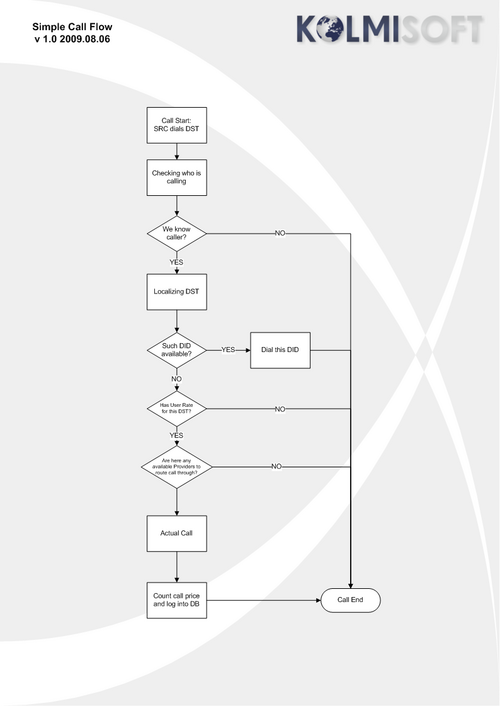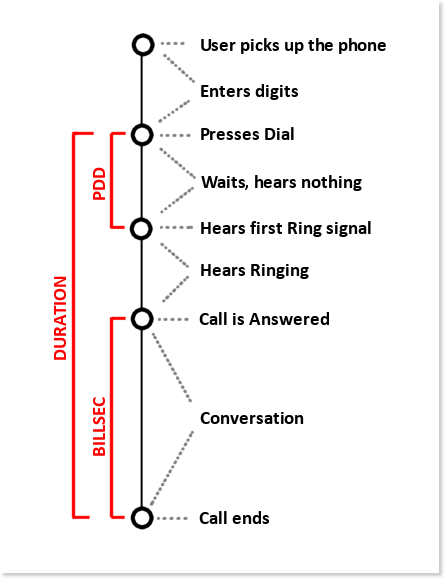Difference between revisions of "Call explained"
From Kolmisoft Wiki
Jump to navigationJump to search
| Line 1: | Line 1: | ||
[[Image:simplified_call_flow_1.0.png|right|500px]] | [[Image:simplified_call_flow_1.0.png|right|500px]] | ||
* Duration - the time from when the caller (call sender) enters the number (presses Dial) until the end of the call. | * Duration - the time from when the caller (call sender) enters the number (presses Dial) until the end of the call. | ||
* Billsec - the time from when the callee (call receiver) answers until the end of the call. | * Billsec - the time from when the callee (call receiver) answers until the end of the call. You see billsec on the Invoice you get from your Telecommunications company. | ||
* Post Dial Delay (PDD) - The time between punching in the last digit (or Dial button) of a telephone number and receiving a ring or busy signal. | * Post Dial Delay (PDD) - The time between punching in the last digit (or Dial button) of a telephone number and receiving a ring or busy signal. | ||
Revision as of 10:57, 21 August 2013
- Duration - the time from when the caller (call sender) enters the number (presses Dial) until the end of the call.
- Billsec - the time from when the callee (call receiver) answers until the end of the call. You see billsec on the Invoice you get from your Telecommunications company.
- Post Dial Delay (PDD) - The time between punching in the last digit (or Dial button) of a telephone number and receiving a ring or busy signal.
All these values are measured in milliseconds and rounded to upper second. (Example, if call is 12.05 seconds, then it is rounded to 13 seconds)
If PDD is zero or Billsec equals Duration, then you have False ANSWER (FAS) and this is not good.
If PDD is very long (>3s), you have bad Provider and this is not good.


